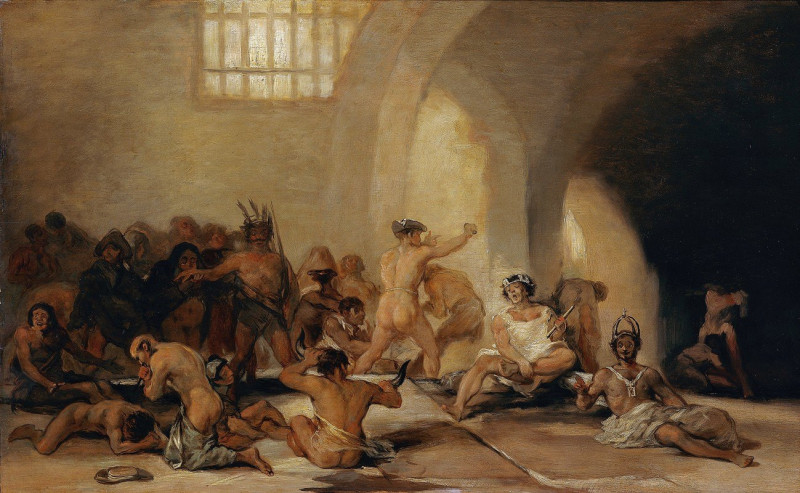El si pronuncian y la mano alargan Al primero que llega. (They say yes and give their hand to the first comer.) (1796-1797)
Technique: Giclée quality print
Recommended by our customers
More about this artwork
Francisco de Goya, a pivotal figure in the Romantic movement, created the evocative etching "El si pronuncian y la mano alargan Al primero que llega" between 1796 and 1797. This piece, translating to "They say yes and give their hand to the first comer," is a striking illustration from Goya's series of 80 prints known as "Los Caprichos." These works delve deep into the complexities of human nature, critiquing the social, political, and moral issues of his time.In this particular etching, Goya presents a scene imbued with irony and critical social commentary. The image shows a young woman, centrally placed and dressed in a flowing gown, extending her hand towards an eagerly waiting group of grotesquely caricatured suitors. These figures, exaggerated in their portrayal with grasping hands and eager expressions, seem to compete for her favor. The foremost suitor, grinning unnervingly, reaches out to claim her hand.The darkness of the setting and the intense, contrasting play of light and shadow highlight the theatricality and intensity of the encounter. Goya's masterful use of etching techniques amplifies the dramatic effect, creating a sense of depth and emotional resonance. This composition not only reflects Goya's skills as an artist but also his profound skepticism about the institution of marriage and the commodification of women in 18th-century Spanish society."El si pronuncian y la mano alargan Al primero que llega" is an emblematic work that showcases Goya's ability to intertwine artistic beauty with sharp social criticism.
Delivery
Returns
Francisco José de Goya y Lucientes (30 March 1746 – 16 April 1828) was a Spanish romantic painter and printmaker. He is considered the most important Spanish artist of the late 18th and early 19th centuries. His paintings, drawings, and engravings reflected contemporary historical upheavals and influenced important 19th- and 20th-century painters. Goya is often referred to as the last of the Old Masters and the first of the moderns.














































